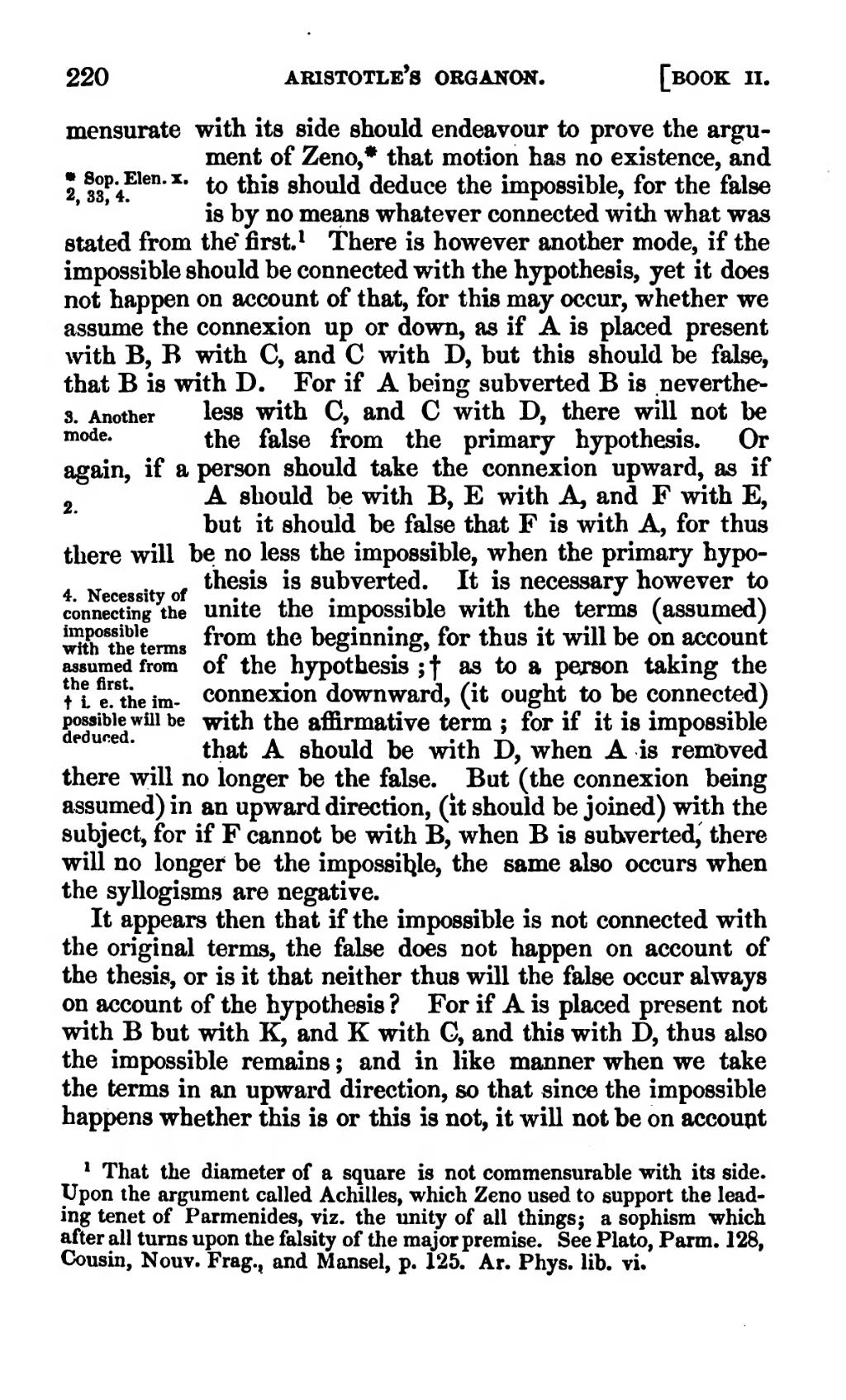mensurate with its side should endeavour to prove the argument of Zeno, that motion has no existence, and to this should deduce the impossible, for the false is by no means whatever connected with what was stated from the first. There is however another mode, if the impossible should be connected with the hypothesis, yet it does not happen on account of that, for this may occur, whether we assume the connexion up or down, as if A is placed present with B, B with C, and C with D, but this should be false, that B is with D. For if A being subverted B is nevertheless with C, and C with D, there will not be the false from the primary hypothesis. Or again, if a person should take the connexion upward, as if A should be with B, E with A, and F with E, but it should be false that F is with A, for thus there will be no less the impossible, when the primary hypothesis is subverted. It is necessary however to unite the impossible with the terms (assumed) from the beginning, for thus it will be on account of the hypothesis; as to a person taking the connexion downward, (it ought to be connected) with the affirmative term; for if it is impossible that A should be with D, when A is removed there will no longer be the false. But (the connexion being assumed) in an upward direction, (it should be joined) with the subject, for if F cannot be with B, when B is subverted, there will no longer be the impossible, the same also occurs when the syllogisms are negative.
It appears then that if the impossible is not connected with the original terms, the false does not happen on account of the thesis, or is it that neither thus will the false occur always on account of the hypothesis? For if A is placed present not with B but with K, and K with C, and this with D, thus also the impossible remains; and in like manner when we take the terms in an upward direction, so that since the impossible happens whether this is or this is not, it will not be on account

